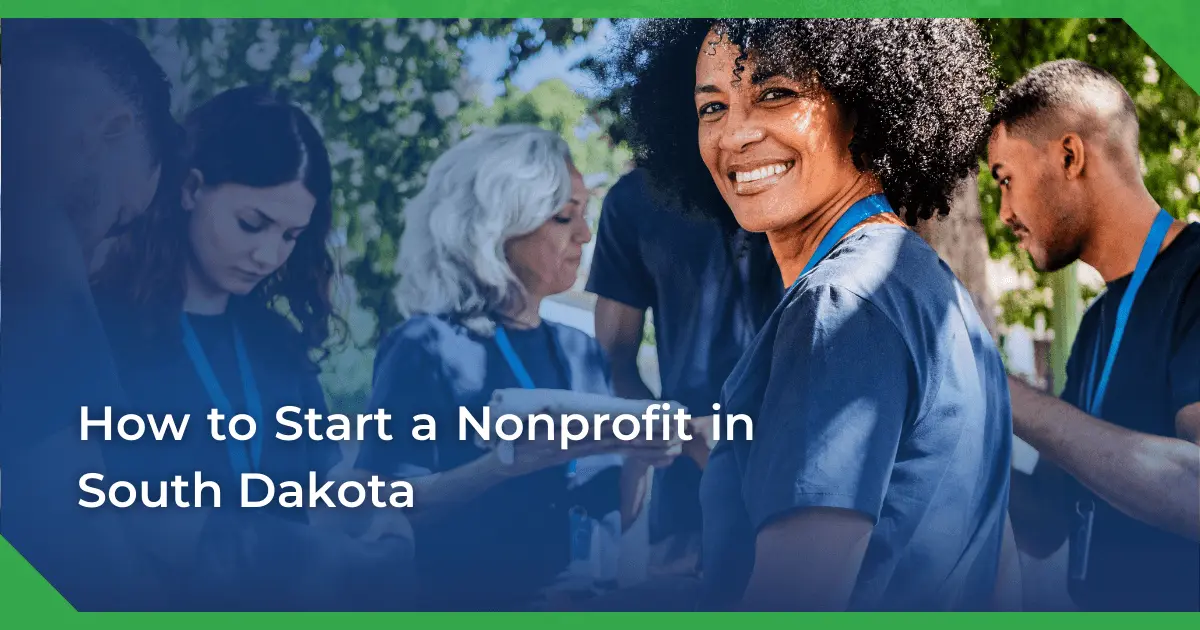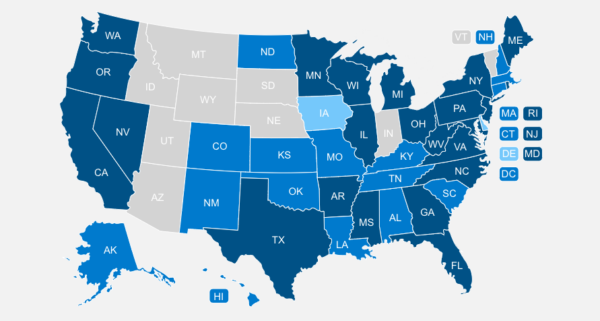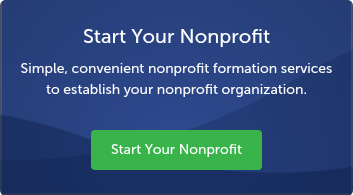How to Start a Nonprofit in South Dakota: A Beginner’s Step-by-Step Guide

Whether you’re passionate about education, healthcare, or community development, starting a nonprofit in South Dakota could be your path to creating lasting social impact. However, navigating the setup process might seem overwhelming at first – from legal requirements to tax exemptions.
Fortunately, starting a nonprofit in South Dakota doesn’t have to be complicated. With the right guidance and systematic approach, you can transform your vision into a thriving organization that serves your community’s needs. Labyrinth, Inc.’s fully managed nonprofit formation service handles everything from state incorporation through federal 501(c)(3) approval, with 100% IRS approval guarantee and 1-on-1 guidance from Nonprofit Compliance Specialists with over 15 years of experience.
This comprehensive guide will walk you through each essential step of establishing your nonprofit in South Dakota, from defining your mission to holding your first board meeting. Ready to make a difference in your community? Let’s get started!
Planning Your South Dakota Nonprofit
The foundation of a successful nonprofit organization in South Dakota begins with thorough planning. Currently, there are over 7,714 organizations employing more than 122,354 people in the state, making it crucial to establish a solid groundwork for your venture.
Identifying Your Mission and Purpose
Your mission statement serves as the cornerstone of your organization. A compelling mission statement should answer three fundamental questions: whom you serve, why you exist, and how you serve them. For instance, when crafting your mission statement, use this format:
“Our mission is to _____(what)_____ for ____(who)_____ by ____(how)_____”
The best mission statements are crystal clear and concise, avoiding industry jargon or buzzwords. Additionally, your mission statement guides decision-making processes and drives people to learn more about your organization. Remember that your mission statement should be more tangible than a vision statement and may evolve more frequently.
Researching Similar Organizations
Understanding your nonprofit’s ecosystem is essential for long-term success. South Dakota’s nonprofit sector generates over $6.20 billion in annual revenues, presenting both opportunities and competition for resources.
Start by identifying organizations that:
- Provide similar services to similar stakeholders
- Operate with a comparable model
- Share your geographic focus
- Attract similar funders and donors
Gather information about potential competitors through various sources, including:
- Websites and social media accounts
- Annual reports and Form 990s
- Press releases
- Industry blogs
Creating a Basic Budget Plan
A well-structured budget serves as your financial roadmap. Since 91% of South Dakota public charities operate on revenue of less than $1 million annually, careful financial planning is crucial. Your budget should reflect your organization’s planned financial activities for the year ahead, showing expected revenue sources and operational expenses.
When developing your initial budget:
- Start the process several months in advance
- Include your board, staff, and volunteers in the planning
- Create separate budgets for special projects
- List expenses in categories like staff, contractors, occupancy, and support expenses
- Organize contributed income by source (individuals, foundations, corporations)
Remember that monitoring your revenue and expenses should become part of your organizational culture. The Better Business Bureau recommends spending no more than 35% of funding on overhead expenses and at least 65% on programs.
Professional guidance can help ensure your planning phase sets a strong foundation for your nonprofit’s future success. Labyrinth’s end-to-end formation support includes assistance with budget planning and organizational structure to ensure compliance from day one. Furthermore, regular budget reviews – annually, quarterly, and monthly – will help keep your organization on track toward achieving its mission.
Setting Up Your Legal Structure
Establishing a strong legal foundation marks a crucial milestone in your nonprofit journey. Let’s explore the essential steps to create a solid legal structure for your South Dakota nonprofit organization.
Choosing Your Nonprofit Name
Selecting an appropriate name requires careful consideration, as it shapes your organization’s identity. Before finalizing your choice, follow these essential steps:
- Verify Name Availability:
- Use the Business Name Availability Search tool on the South Dakota Secretary of State (605-773-4845, sdsos.gov) website
- Check domain name availability for your future website
- Search the United States Patent and Trademark Office database to avoid trademark conflicts
Moreover, South Dakota maintains specific naming guidelines that your organization must follow. Your chosen name should be distinct from other business entities and accurately reflect your stated purpose in the Articles of Incorporation.
To secure your preferred name, consider filing a name reservation application. This reserves your chosen name for 120 days with a $25.00 filing fee. This step proves particularly valuable while preparing other formation documents. When you work with Labyrinth, we handle all name searches and reservations as part of our comprehensive formation service, ensuring your chosen name meets all state requirements.
Recruiting Board Members
The board of directors serves as your nonprofit’s governing body, making their selection particularly significant. South Dakota law establishes specific requirements for board composition:
Board Structure Requirements:
- Minimum of three directors
- One-year term unless specified otherwise in bylaws
- No residency requirements for board members
- Directors need not be members of the organization unless specified in bylaws
Your board should include individuals who bring diverse skills and perspectives. We recommend selecting members based on their:
- Commitment to your mission
- Professional expertise
- Community connections
- Available time for board service
Key Officer Positions:
The board must include:
- President: Oversees board meetings and supervises nonprofit activities
- Secretary: Maintains meeting minutes and handles board communications
- Treasurer: Manages financial records and oversees tax filings
Board members carry three fundamental legal duties:
- Duty of Care: Active participation in planning and decision-making
- Duty of Loyalty: Prioritizing organization’s interests above personal gains
- Duty of Obedience: Ensuring compliance with laws and mission adherence
To strengthen your board’s effectiveness, consider implementing these practices:
- Conduct thorough interviews with potential candidates
- Provide clear expectations regarding time commitments
- Share detailed information about meeting schedules
- Outline any financial contribution requirements
Remember that board members cannot receive compensation beyond expense reimbursement. This ensures their service remains focused on advancing your organization’s mission rather than personal gain.
Professional assistance can help ensure your board structure aligns with both legal requirements and organizational needs. Labyrinth’s Nonprofit Compliance Specialists provide guidance on board composition and governance best practices throughout the formation process. Subsequently, maintaining proper documentation of board activities becomes essential for your nonprofit’s long-term success.
Filing Formation Documents
Filing the right documents establishes your nonprofit’s legal existence in South Dakota. Let’s explore the essential paperwork needed to formalize your organization.
Preparing Articles of Incorporation
The Articles of Incorporation officially create your South Dakota nonprofit corporation. The filing fee is $30.00, and processing typically takes about 7 business days. However, Labyrinth’s state-specific drop-off service can expedite this process where available, ensuring faster approval of your formation documents. Your Articles must include:
- Organization name and purpose
- Principal office address
- Registered agent information
- Initial board of directors (minimum three directors required)
- Statement about membership structure
- Asset distribution provisions upon dissolution
Important Requirements:
- All incorporators must be 18 years or older
- The number of initial board members must be stated clearly
- A registered agent with a physical South Dakota address is mandatory
Critically, your Articles must include specific language to qualify for 501(c)(3) status. This includes an IRS-approved purpose clause stating your charitable, educational, religious, or scientific purpose, and a dissolution clause ensuring that upon dissolution, your assets will be distributed to another 501(c)(3) organization or government entity for public purposes.
Getting an EIN Number
An Employer Identification Number (EIN) serves as your nonprofit’s federal tax ID. You must obtain your EIN after your nonprofit is legally formed but before opening a bank account or applying for tax exemption. This nine-digit number becomes permanently associated with your organization. Through Labyrinth’s managed service, EIN acquisition is included as part of your formation package, eliminating the need to navigate the IRS application process independently. You can obtain an EIN through:
- Online application (preferred method)
- Fax submission
- Mail application
- Phone (international applicants only)
Key Considerations:
- Apply only after your organization is legally formed
- The application is free through the IRS
- The responsible party must be an individual, not an entity
- Online applications receive immediate EIN assignment
Creating Required Policies
Your nonprofit needs specific policies to ensure proper governance. We can help develop these essential documents:
Conflict of Interest Policy:
A comprehensive policy should outline:
- Clear definition of conflicts
- Disclosure procedures
- Voting restrictions for conflicted members
- Annual disclosure requirements
The policy protects against:
- Improper financial benefits
- Appearance of impropriety
- Loss of tax-exempt status
Board Meeting Documentation:
Minutes should record:
- Conflict disclosures
- Board discussions
- Voting outcomes
- Abstentions by conflicted members
Proper documentation ensures transparency and compliance with state and federal requirements. Labyrinth provides templates and guidance for all required policies, which are securely stored in your SOC 2 Type II nonprofit client portal for easy access and updates. Accordingly, your organization should maintain detailed records of all policy implementations and board decisions.
Remember that these policies serve as your organization’s operating manual. Therefore, they should align with your Articles of Incorporation and state laws. Finally, store all documents securely in your Nonprofit Records Kit for easy access during IRS reviews or audits.
Applying for Tax Exemption
Securing tax-exempt status marks a pivotal step in establishing your South Dakota nonprofit. It’s important to understand that forming a nonprofit corporation with the state does not automatically grant tax-exempt status—you must apply separately to the IRS for federal recognition. Although this process requires careful attention to detail, understanding the requirements ensures a smooth application process. With Labyrinth’s 100% money-back guaranteed 501(c)(3) approval service, you can proceed with confidence knowing experienced specialists handle every aspect of your application.
Understanding 501(c)(3) Requirements
To qualify for 501(c)(3) status, your organization must operate exclusively for one or more of these purposes:
- Religious activities
- Scientific research
- Educational programs
- Literary endeavors
- Public safety testing
- Prevention of cruelty to children or animals
- Amateur sports development
- Charitable work
Core Operational Guidelines:
Your nonprofit must absolutely refrain from political campaign activities. In addition, your assets and earnings cannot benefit board members, officers, or other insiders. Most importantly, all assets must remain permanently dedicated to charitable purposes.
We ensure your organization meets these essential criteria:
- No substantial legislative activities
- No private benefit beyond reasonable compensation
- Clear dissolution clause in organizing documents
- Proper documentation of all activities
Completing IRS Form 1023
Form 1023 serves as your official application for tax-exempt recognition. The IRS offers two versions, and Labyrinth’s specialists determine which form best suits your organization’s needs, handling all preparation and submission:
Standard Form 1023:
For organizations with:
- Assets exceeding $250,000
- Annual gross receipts above $50,000
Form 1023-EZ:
A streamlined version available if your organization:
- Has assets under $250,000
- Expects annual gross receipts below $50,000
Application Timeline:
Submit Form 1023 within 27 months after incorporation. This ensures your tax-exempt status dates back to your formation date. After this period, exemption begins from the application date.
Essential Components:
Your application package must include:
- Detailed narrative of past, present, and planned activities
- Financial data and projections
- Organizing documents
- EIN confirmation
- Conflict of interest policy
- Board member information
Expert assistance proves valuable as the IRS scrutinizes applications thoroughly. Labyrinth’s team manages all IRS correspondence during the review process, ensuring timely responses to any requests for additional information. Consequently, missing information often leads to delays or rejection.
State Tax Considerations:
After receiving federal approval, apply for state tax exemptions. In South Dakota:
- No separate state income tax exemption needed
- Sales tax exemption requires additional application with the South Dakota Department of Revenue (605-773-3311, dor.sd.gov)
- Must provide IRS determination letter for state benefits
The IRS application review typically spans three to six months, though processing times can vary. Throughout this period, maintain detailed records of all organizational activities and financial transactions. Above all, ensure your application demonstrates clear dedication to public benefit rather than private interests. Remember that donations are not tax-deductible until you receive your IRS determination letter confirming 501(c)(3) status. With Labyrinth’s comprehensive support, including reinstatement services for organizations whose federal tax exemption has been revoked, you can navigate this complex process with confidence.
Managing Initial Operations
Once your nonprofit’s legal framework is in place, establishing efficient operational systems becomes essential for long-term success. Let’s explore the crucial first steps in managing your organization effectively.
Opening a Bank Account
After receiving your EIN, opening a dedicated bank account for your nonprofit marks a significant milestone. Most banks require:
- EIN letter from the IRS
- Approved Articles of Incorporation
- Signed and approved bylaws
- Board meeting minutes authorizing account opening
Account Selection Tips:
- Look for accounts with minimal maintenance fees
- Consider remote check deposit capabilities
- Ensure fraud prevention tools are included
- Evaluate online banking features
Notably, some banks might list nonprofit accounts under C-Corp designation. In such cases, discuss with the branch manager to ensure proper account setup. All necessary documentation for account opening is readily available in your secure Labyrinth nonprofit portal, streamlining this crucial step.
Setting Up Record Keeping
Proper documentation forms the backbone of nonprofit compliance. The IRS mandates maintaining records that demonstrate tax rule compliance. Essential records include:
Financial Documentation:
- Income sources
- Expense receipts
- Credit documentation
- Unrelated business income records
- Annual returns and tax filings
Operational Records:
- Program activity details
- Fundraising event outcomes
- Service statistics
- Board meeting minutes
- Corporate documents
We suggest implementing a document retention policy specifying:
- Storage duration for different document types
- Digital backup procedures
- Destruction schedules
- Access protocols
Labyrinth’s secure, SOC 2 Type II compliant nonprofit client portal provides a centralized location for storing all essential documents, ensuring they’re always accessible when needed for compliance reviews or audits.
Planning First Board Meeting
Your initial board meeting sets the tone for organizational governance. The agenda should address several crucial items:
Essential Actions:
- Formally adopt bylaws
- Elect officers
- Authorize bank account opening
- Implement required policies
- Set regular meeting schedule
Meeting Best Practices:
- Send agenda and materials 7 days beforehand
- Limit meetings to two hours
- Offer refreshments for comfort
- Record detailed minutes
We recommend emphasizing board participation, suggesting members should contribute 80% of meeting discussions. Furthermore, distribute meeting minutes within 24 hours, highlighting action items and responsible parties.
Meeting Structure:
- Call to order
- Review and approve minutes
- Officer reports
- Committee updates
- Old business
- New business
- Announcements
- Adjournment
Remember to maintain thorough documentation of all decisions made throughout the meeting. These records prove invaluable during IRS reviews or legal matters. Likewise, establish a regular schedule for future meetings to maintain consistent organizational oversight. With first-year fundraising registration included in Labyrinth’s bundled services, your board can focus on governance while compliance requirements are managed professionally.
Ongoing Compliance Obligations
After formation, your nonprofit must maintain compliance with various federal and state requirements. Key ongoing obligations include:
Federal Requirements:
- File Form 990, 990-EZ, or 990-N annually, depending on your revenue
- Maintain tax-exempt status through proper operations
- Keep accurate financial records for all transactions
State Requirements:
- File annual or biennial reports with the South Dakota Secretary of State
- Renew charitable solicitation registrations if fundraising
- Maintain registered agent services
Remember that compliance is an ongoing responsibility, not a one-time achievement. We handle these ongoing filing requirements, ensuring your nonprofit remains in good standing while you focus on your mission.
Conclusion
Starting a nonprofit in South Dakota requires careful planning, dedication, and attention to detail. Most importantly, each step builds upon the previous one – from crafting your mission statement through managing initial operations.
Your success depends on thorough preparation and proper documentation. A well-structured board, clear policies, and efficient record-keeping systems create a strong foundation for your organization’s future. Additionally, maintaining compliance with state and federal regulations ensures your nonprofit can focus on its core mission rather than administrative challenges.
Above all, remember that professional guidance through the nonprofit formation process can help avoid common pitfalls and accelerate your path to serving your community. Expert support proves especially valuable during complex phases like tax exemption applications and initial operational setup. Labyrinth’s transparent pricing with no hidden fees ensures you know exactly what to expect throughout the formation process.
Labyrinth combines expert service with modern technology to handle your nonprofit’s registrations and renewals, so you can focus on your mission. With comprehensive compliance support from charitable solicitation to corporate filings, we’ve got you covered—making nonprofit compliance easy. Our Nonprofit Compliance Specialists, each with 15+ years of nonprofit leadership experience, provide personalized 1-on-1 support throughout your journey.
Therefore, take time to implement each step properly, engage your board actively, and maintain detailed records of all activities. Your careful attention to these foundational elements will position your South Dakota nonprofit for sustainable growth and lasting community impact.


![Your 501(c)(3) Approval Guaranteed{{ include_custom_fonts({"Museo Sans":["Bold","Bold Italic","Regular","Regular Italic"]}) }}](https://no-cache.hubspot.com/cta/default/560178/interactive-194101957210.png)
![Start Your Nonprofit with Confidence{{ include_custom_fonts({"Museo Sans":["Bold","Bold Italic","Regular","Regular Italic"]}) }}](https://no-cache.hubspot.com/cta/default/560178/interactive-194101957151.png)
